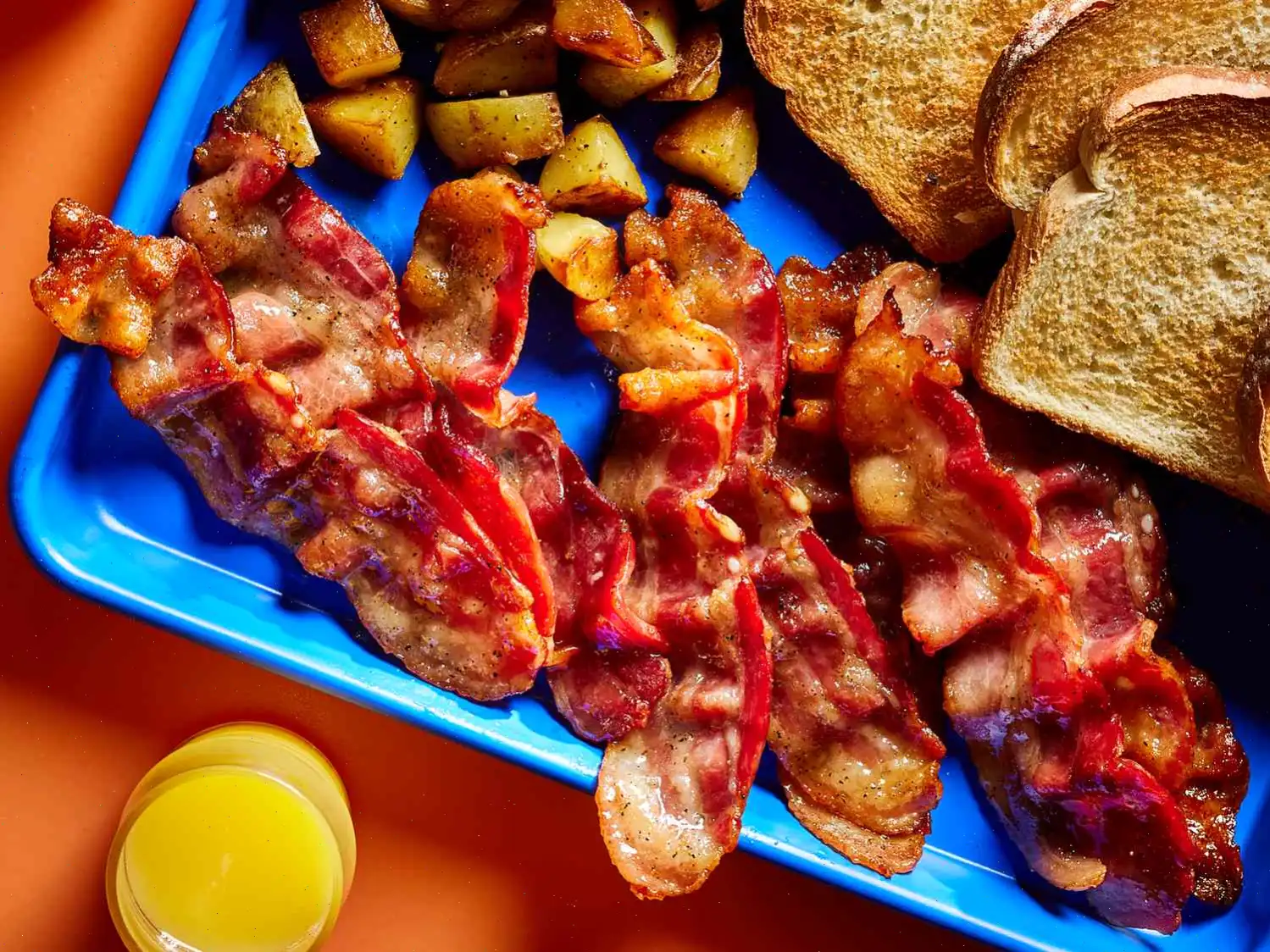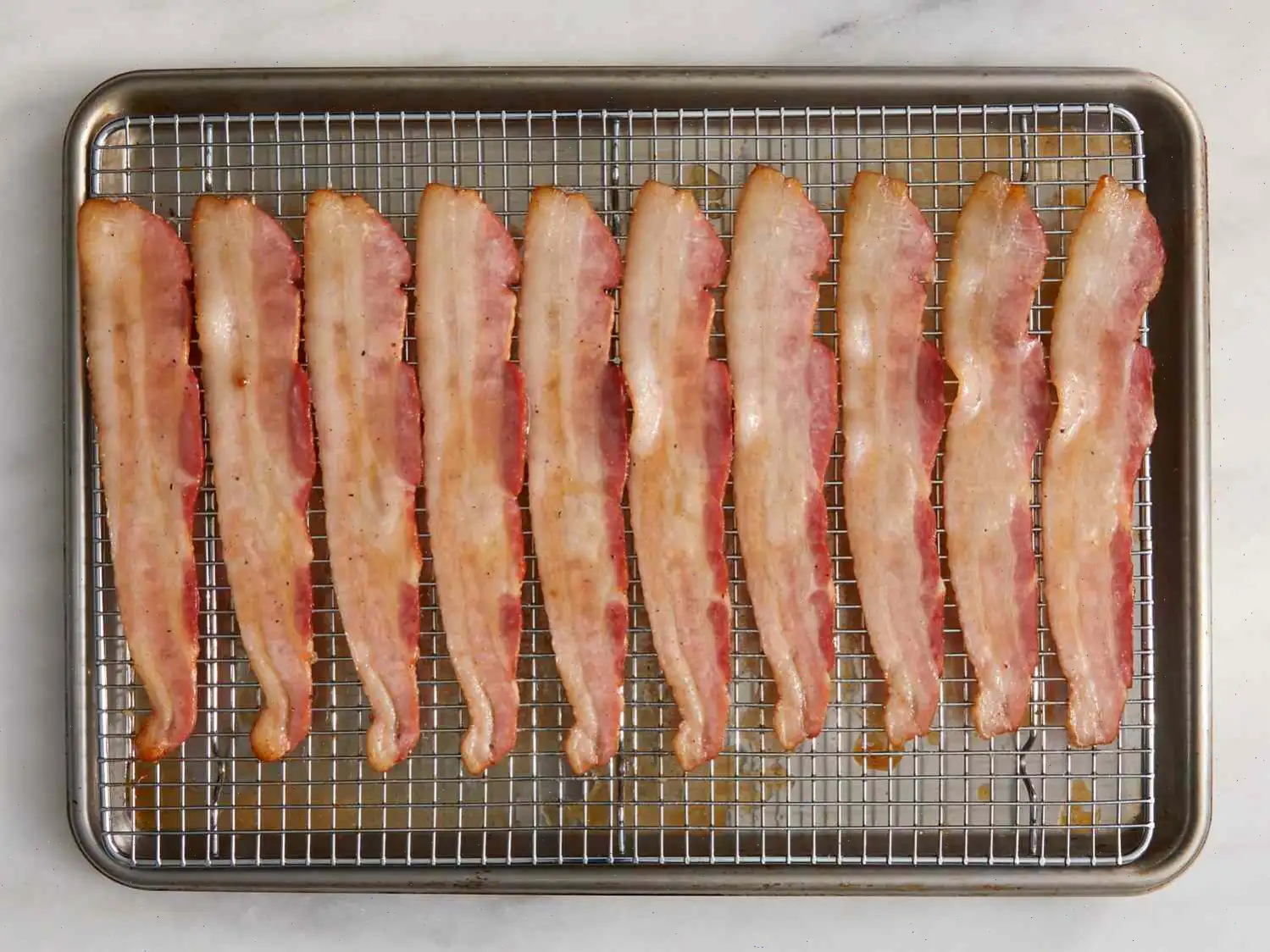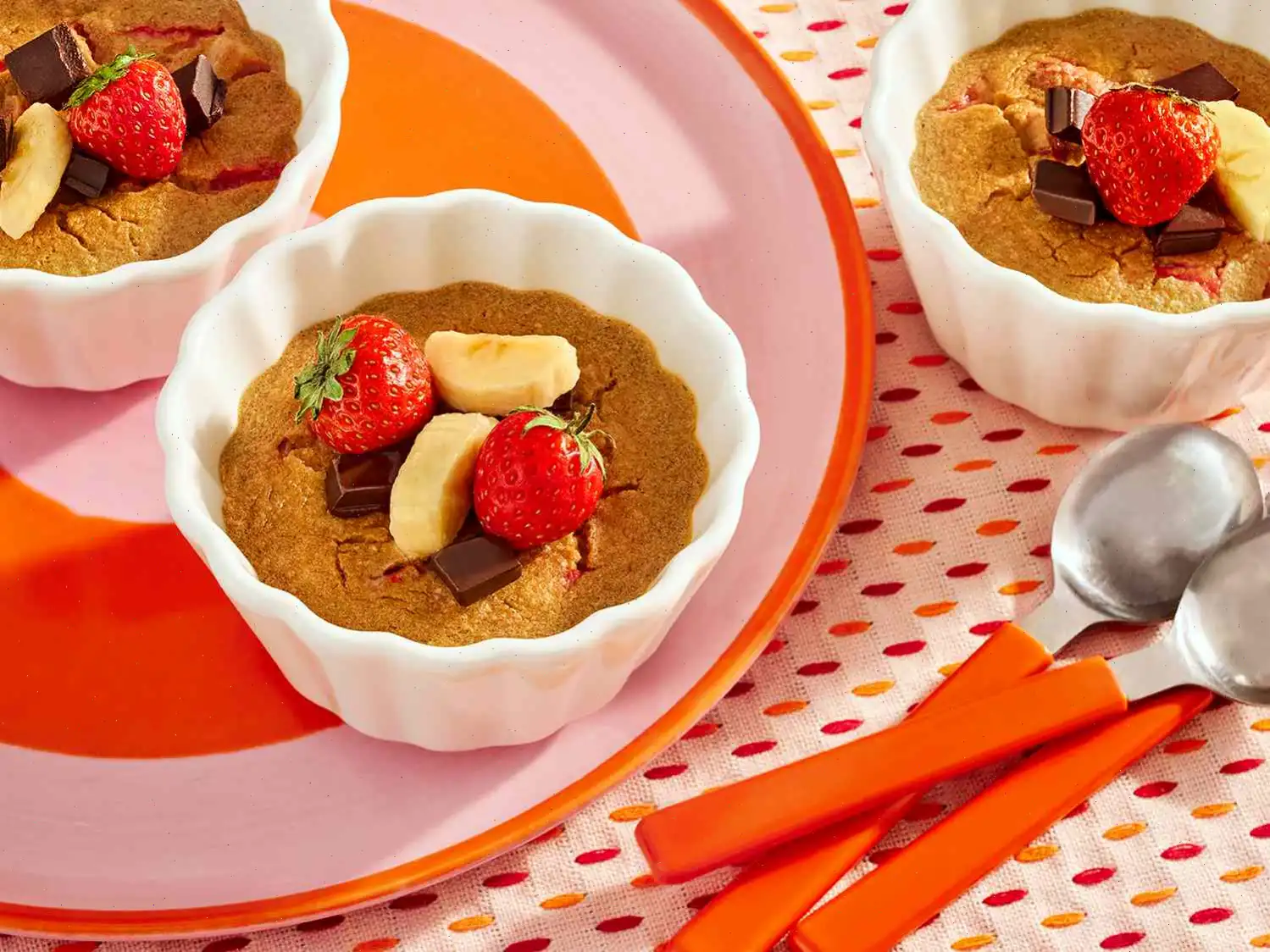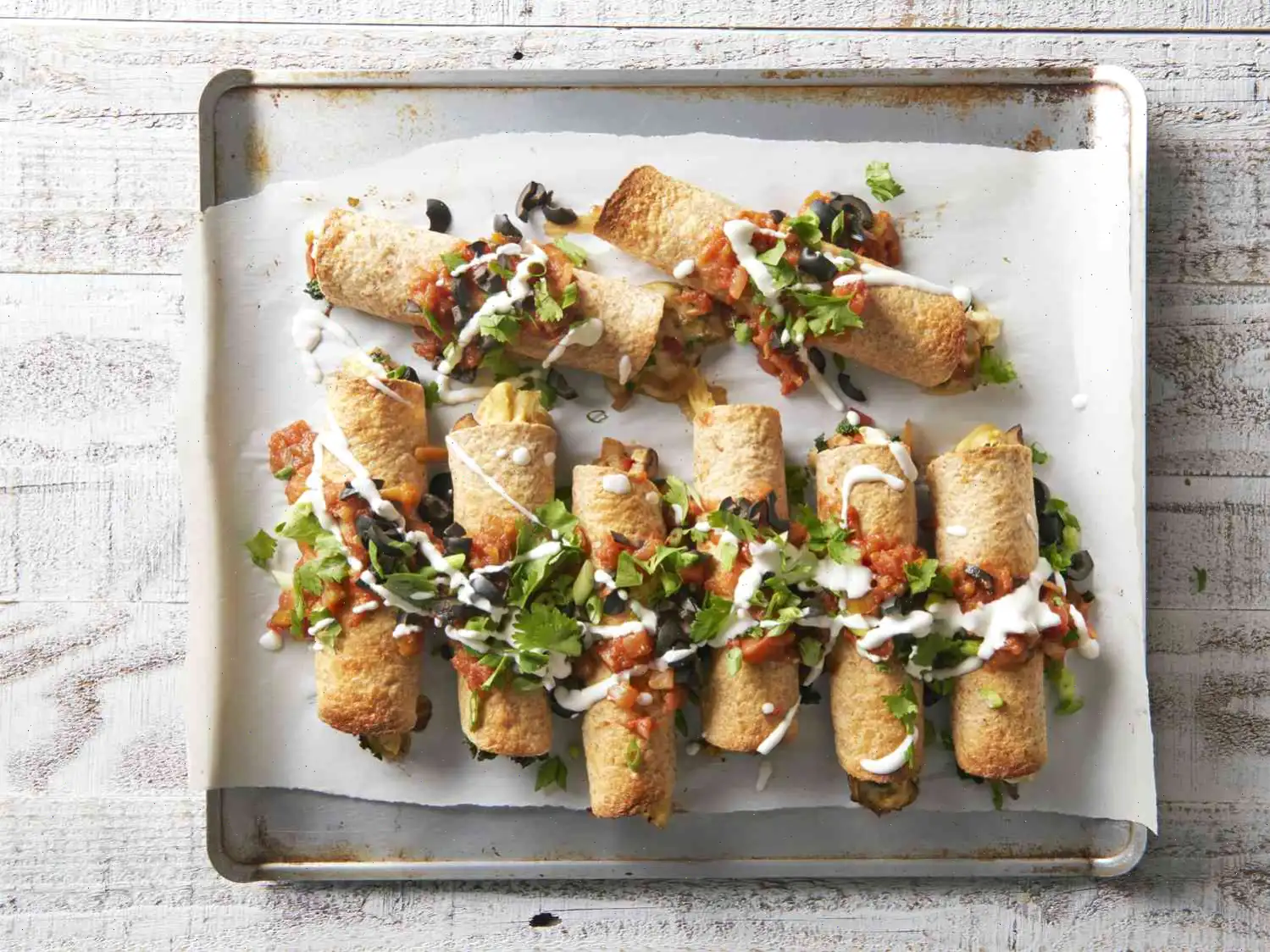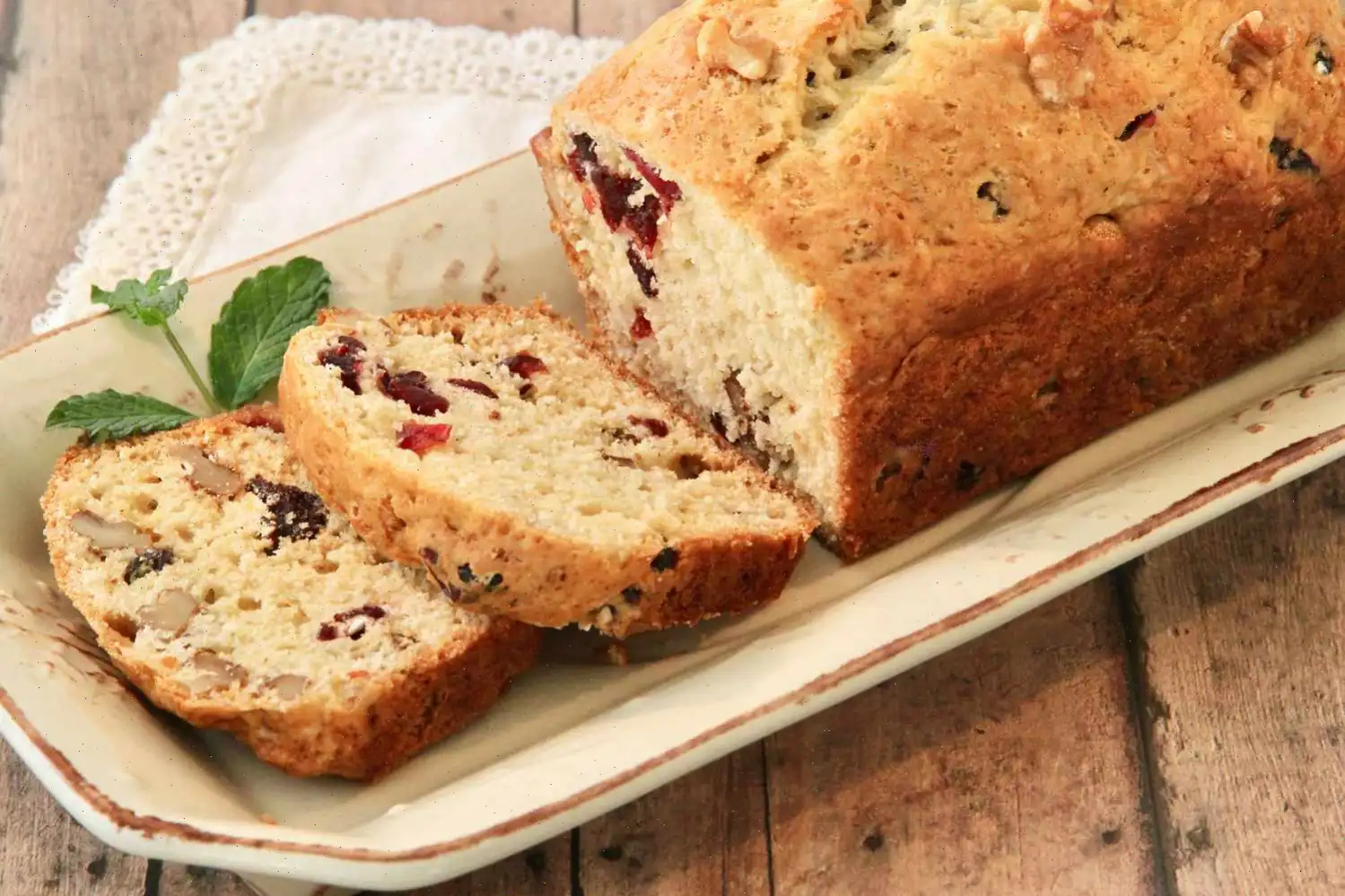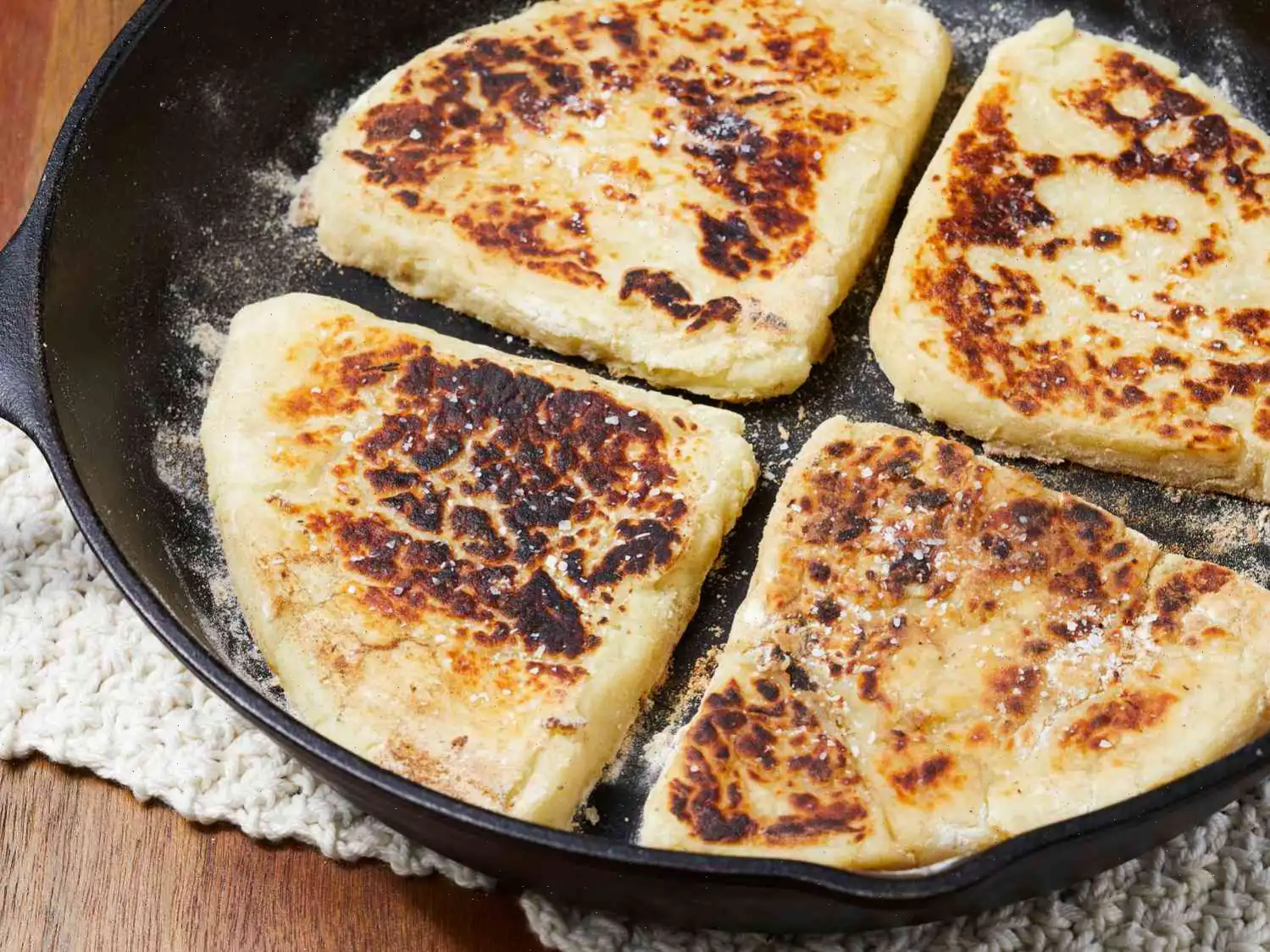
Candied Bacon Recipe
Sweet and Savory Bacon Recipe
Ingredients (for 6 servings):
- cup packed brown sugar
- 2 tablespoons rice vinegar
- 2 tablespoons maple syrup
- Ground black pepper to taste
- 1 pound thick-cut bacon
Directions:
- Preheat your oven to 350F (175C).
- In a small bowl, mix together the brown sugar, rice vinegar, maple syrup, and black pepper until fully combined.
- Place the bacon slices on a cooling rack set over a baking sheet, ensuring they are evenly spaced out.
- Transfer the baking sheet into the preheated oven and bake for 10 minutes. After 10 minutes, turn the bacon slices over and bake for another 5 minutes.
- Remove the bacon from the oven and brush both sides with the brown sugar mixture you prepared earlier.
- Return the bacon to the oven and bake for another 5 minutes.
- Continue to baste the bacon every 5 minutes, until the bacon is perfectly browned and crispy, about 35 minutes in total.
- Once the bacon is done, remove from the oven and allow to cool for a few minutes before serving.
Tip: Line the baking sheet with aluminum foil for easier cleanup.
Nutrition Facts (per serving):
- Calories: 187
- Fat: 10g (13% DV)
- Saturated Fat: 3g (17% DV)
- Cholesterol: 27mg (9% DV)
- Sodium: 577mg (25% DV)
- Total Carbohydrate: 14g (5% DV)
- Total Sugars: 13g
- Protein: 9g (18% DV)
- Calcium: 16mg (1% DV)
- Iron: 1mg (3% DV)
- Potassium: 168mg (4% DV)
* Percent Daily Values are based on a 2,000 calorie diet. Your daily values may be higher or lower depending on your calorie needs.
** Nutrient information is based on available data and may vary based on specific ingredient choices.
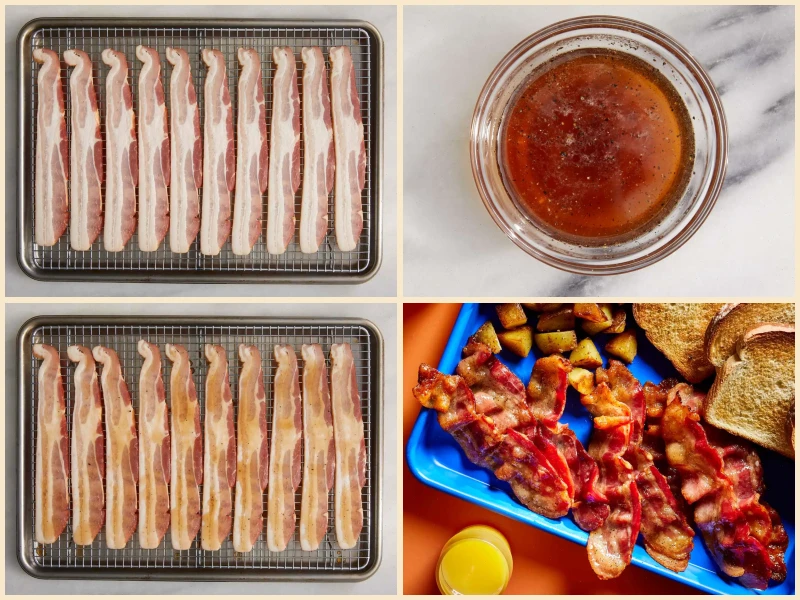
Candied bacon, also known as "sweet bacon," is a unique and irresistible snack that combines the smoky flavor of bacon with the rich sweetness of brown sugar, maple syrup, and a tangy vinegar glaze. This culinary treat has become increasingly popular, especially in American cuisine, where its served as an appetizer or a brunch dish. The dish was initially brought to wider attention in the United States during the early 2000s, gaining favor for its unique flavor profile that balances the crispy, salty bacon with a sticky sweet coating. Over time, it has become a favorite among bacon enthusiasts, party-goers, and brunch lovers alike.
Origin and History
The origins of candied bacon can be traced back to the trend of sweet-and-salty food combinations that gained prominence in American kitchens. The practice of glazing bacon with sweet ingredients, such as brown sugar and maple syrup, likely began as a way to elevate the traditional savory flavor of bacon. While there isn't a single known inventor of candied bacon, the dish began appearing on brunch menus in American restaurants around the early 2000s. It was quickly adopted as a popular item at upscale brunch spots and cafes, where it was often paired with cocktails like Bloody Marys or served alongside waffles and pancakes.
Regional Features and Variations
Candied bacon is predominantly a North American dish, with variations seen across different regions. In the Southern United States, it is common to add a dash of cayenne pepper or chili powder to the glaze, giving the bacon a spicy kick that complements the sweetness. Meanwhile, in some regions, bourbon or whiskey is used in the glaze to enhance the smoky flavor of the bacon. Some versions even incorporate coffee or chocolate for a more complex taste. Despite these variations, the fundamental concept of sweetening bacon with brown sugar, syrup, and vinegar remains the same.
Differences from Similar Dishes
Candied bacon stands out from other bacon-based dishes primarily due to its sugar-glazed coating. While bacon is often used in savory dishes like bacon and eggs or BLT sandwiches, candied bacon is a sweet treat in its own right. Similar to prosciutto or other cured meats served with melon, candied bacon plays on the contrast of flavorscombining the crispiness and saltiness of bacon with a sticky sweet exterior. Unlike other sugary bacon recipes that simply coat bacon with sugar before frying, candied bacon is baked with a syrupy glaze, allowing the sugar to caramelize and create a shiny, crunchy coating.
Where Candied Bacon is Typically Served
Candied bacon is often found on the menu of brunch restaurants, cocktail bars, and even upscale burger joints. Its commonly served as part of a larger breakfast spread, paired with pancakes, waffles, or eggs. In some restaurants, candied bacon is offered as a savory snack with drinks or as an appetizer to kick off a meal. During the holidays, particularly around Christmas, it also makes an appearance at festive gatherings, where its served as a special treat to delight guests. Its sweet-savory flavor combination also makes it a hit at parties and gatherings, where it is typically served as finger food or laid out as a garnish for cocktails.
Interesting Facts
- Candied bacon has been known to make an appearance on the popular food show "Man v. Food," where it is often presented as a challenge due to its addictive nature and richness.
- The dish has inspired various other forms of "candy-coated" meats, with candied ham and candied sausages becoming trendy variations in some culinary circles.
- Candied bacon was included in "the most irresistible foods" list of several food blogs, gaining recognition as a must-try dish for bacon lovers.
- In recent years, the trend has expanded beyond savory snacks, with some people using candied bacon in salads, sandwiches, and even desserts like ice cream and cupcakes.
FAQ about Candied Bacon Recipe
Comments
Maria Moore
01/16/2025 07:31:00 AM
Candied bacon exceeded my expectations! It took about an hour to achieve the perfect level of doneness, even with turning up the heat towards the end. Following the recipe instructions precisely yielded fantastic results. I used 1.25 pounds of bacon, half for candied and half for regular frying, and the amount of candied coating was spot-on. The stark difference in saltiness between the two types of bacon was surprisingly distinct. During brunch with friends, the guys preferred the regular bacon, while us ladies couldn't get enough of the candied version. We even discussed skewering the bacon on sticks for a party - a guaranteed crowd-pleaser! A big thank you, Chef John, for another great recipe!
Mark Hall
05/21/2024 05:01:28 PM
I have prepared this recipe multiple times and each time it turns out amazing. I highly recommend using thick-cut bacon as it holds up better under the glaze compared to thinner bacon. I also decided to double the amount of glaze for an extra tasty touch. Using a rack in a sheet pan is crucial for achieving perfectly crispy bacon. It's important to generously baste the bacon for a nice crust. Let the bacon cook until the fat starts to render before basting to ensure maximum flavor absorption. This time, I decided to add a spice rub before cooking, specifically Fatboy's sweet rub. Sprinkling it on one side of the bacon before baking added a delightful depth of flavor. After the final basting, make sure the bacon reaches a deep mahogany color before taking it out of the oven. Allow it to cool slightly before plating. I found using a fish spatula to remove the bacon from the rack was a bit challenging but manageable. Plate the bacon before the glaze sets to prevent sogginess. If you plan on letting the bacon sit before serving, layer it with parchment paper in between to keep the pieces separate and allow the glaze to dry out more. This dish is always a crowd-pleaser whenever I serve it.
Amy Thompson
08/23/2023 12:28:51 AM
I have a few tips to share after trying this recipe: I found that a little less than 1 lb of thick-cut bacon fit perfectly on my oven rack. I highly recommend lining the baking tray with foil for easy clean-up. I decided to double the amount of sugar and syrup, but I left the vinegar as is. Using a basting brush to apply the glaze worked really well for me. Instead of flipping and basting the bacon every 5 minutes as suggested, I found it easier to do it every 10-15 minutes to avoid losing too much glaze. With thick-cut bacon, I flipped the slices about 3 times, resulting in a total bake time of less than 1 hour. Lastly, I would recommend letting the bacon cool completely for about 30 minutes. I noticed that the bacon tasted even better when the sugar had a chance to harden a bit.
Carolyn Lewis
03/15/2024 01:59:36 PM
I ended up using double the amount of ingredients for 1.5 lbs of bacon. I used regular thick-cut bacon this time, but next time I will opt for bacon that is twice as thick.
Helen Evans
08/01/2022 06:07:53 PM
Oh, this dish was absolutely fantastic! While it was quite labor-intensive, I recommend following other reviewers' advice to thicken the marinade to a paste consistency for easier handling. I also suggest basting and flipping the dish every 10-15 minutes instead of 5, but do keep an eye on it. The extra effort is definitely worth it! I even used regular thin-sliced bacon and it turned out amazing. I'm making it for the second time today and I can't wait! :)
Jerry Martin
03/25/2023 11:23:20 PM
Here is the revised review: Cooking bacon on a rack takes significantly longer, about 3-4 times, than baking it on a sheet pan because there is no grease to help with the cooking process. I recommend partially cooking the bacon about 3/4 of the way before transferring it to the rack and basting it for better results.





